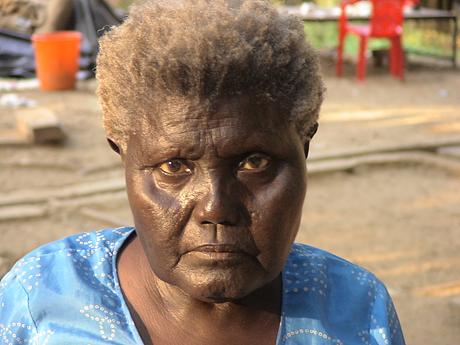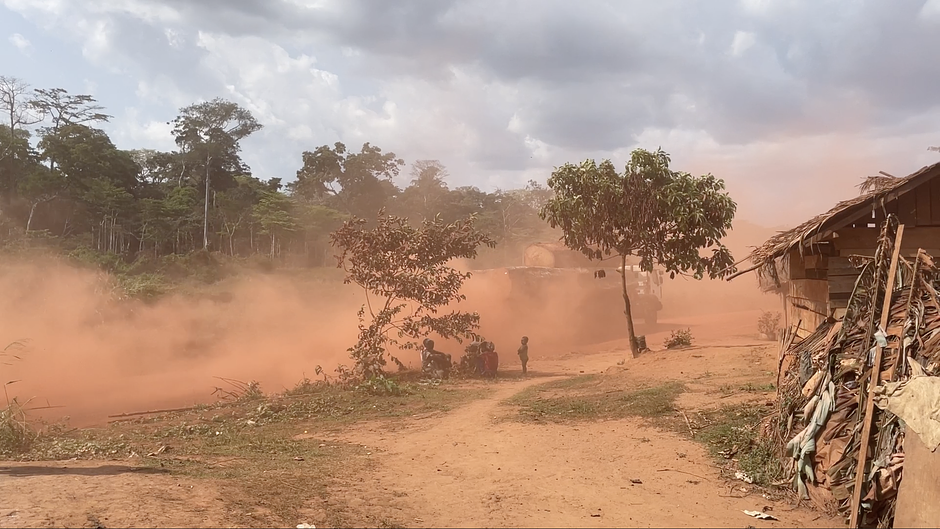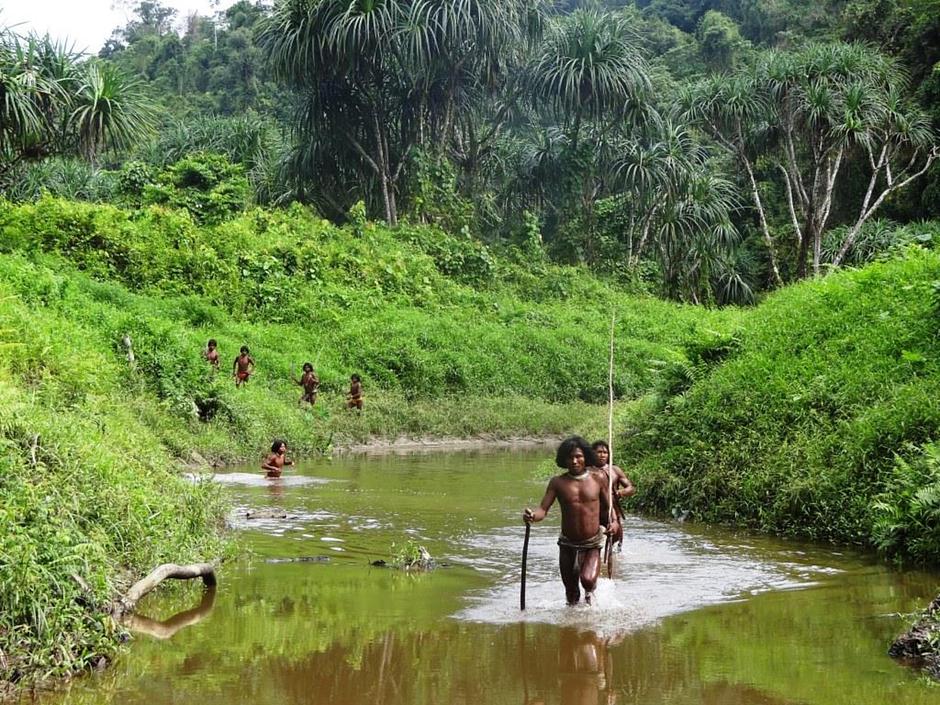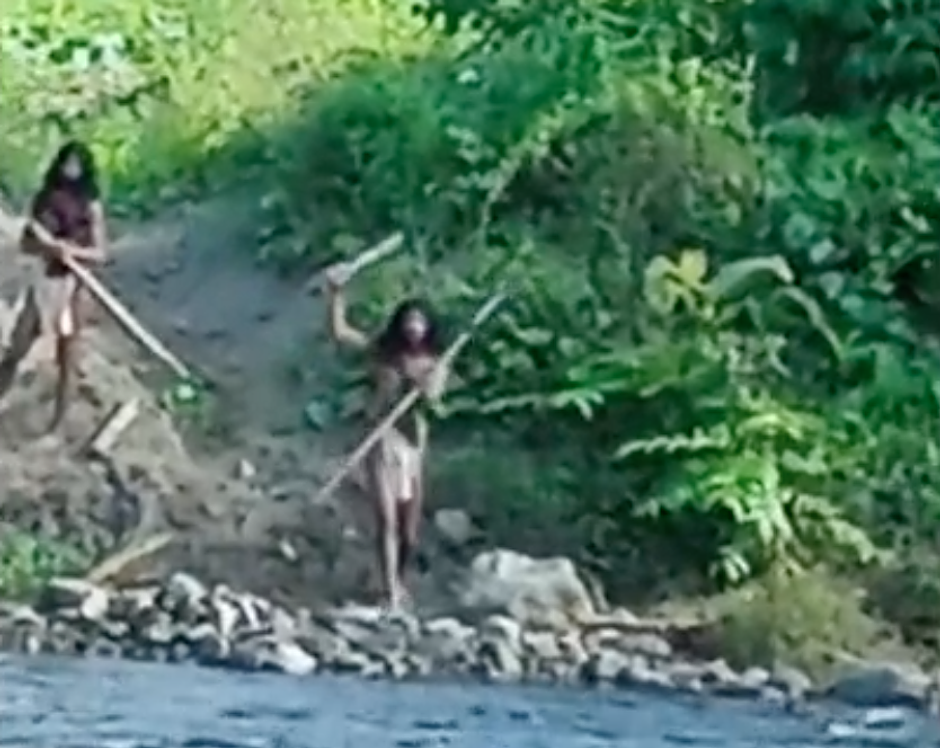We have our own talk
 © Alok Das
© Alok DasOn International Mother Language Day, Survival explores the world’s tribal languages, from the Choctaw code-talkers of World War I to the Bolivian itinerant healers who speak the dialect of the Inca Kings; and reveals why a language is disappearing every two weeks. ’.

Towards the end of World War One, the German army had become adept at decoding the Allied Forces’ radio codes. To avoid the enemy ‘listening in’, the American Expeditionary Forces enlisted the help of Choctaw Indians to relay tactical messages in their mother tongue. It confounded the enemy, and led to critical operational successes. As such, the Choctaw officers had played a pivotal role in the war – even though they were not yet recognised as citizens of the United States. They had also become the first ‘code talkers’ of the U.S. military.
Fast forward to WWII, when Native American code-talkers were involved in many of the major Pacific operations. In fact it is thought that were it not for the involvement of the Navajo tribe in transmitting tactical information in their language, Iwo Jima would have remained in Japanese hands. There was one problem: the Navajo lexicon had no vocabulary for military armament, so familiar words were used to describe such weapons as fighter plane (hummingbird); bombs (eggs) and battleship (whale). It wasn’t until November 2013, however, that the ‘code talkers’ from 33 Native American tribes were awarded – mostly posthumously – with United States Congressional Gold Medals.
More recently, the Navajo language has also been used to convey the messages of a fictitious battle – that of Star Wars, the Hollywood motion picture. ‘Star Wars Episode IV: A New Hope’ was dubbed into the Navajo language in 2013. With a diminishing number of younger Navajo members speaking their mother tongue, the film has been hailed as a way to help preserve the language.
Today, most tribal languages are disappearing faster than they can be recorded. Linguists at the Living Tongues Institute for Endangered Languages believe that on average, a language is disappearing every two weeks. By 2100, more than half of the more than 7,000 languages spoken on Earth—many of them not yet recorded—may disappear. It is thought that the pace at which they are declining exceeds even that of species extinction and yet very few tribal languages have been recorded.
‘Language endangerment is almost always the result of discrimination and bias,’ says Greg Anderson, director of the Living Tongues Institute. The disappearance of languages is often the result of oppressive impositions by the powerful upon the marginalised, the mistreated and the outnumbered.
The loss of language profoundly damages the identity and ways of life of those affected. It is also associated with some of the most damaging and cruel assimilationist policies, such as forced schooling and the removal of Indigenous children from their families.
As tribal peoples are evicted from their lands, as their children are taken away from their communities and forced into education systems that strip away traditional wisdom, as wars, urbanization, genocide, disease, violent land-grabs and globalization continue to threaten tribal peoples with extinction, so the world’s tribal languages are dying. ‘With the death of tribes and the extinction of their languages, unique parts of human society become nothing more than memories’, says Stephen Corry, Director of Survival International, which works for tribal peoples rights worldwide.
In western Brazil, among the endlessly dry, yellowing soya fields of Rondônia state, where smoke billows on the horizon and the smell of burning wood hangs in the air, there still exist small fragments of lush, intact rainforest. Here the five remaining members of the once-thriving, and isolated, Akuntsu tribe live.
Their diminished population is due to the building of a major highway through Rondônia in the 1970s, which resulted in waves of cattle ranchers, loggers, land speculators and colonists occupying the state. The settlers were hungry for land, at any price. Cattle ranchers bulldozed the forest home of the Akuntsu, tried to hide the destruction, and employed gunmen to murder the inhabitants. The surviving members fled into the forest, where they remained, traumatised, until contact was made in the mid-1990s. Since then, linguists have been working with the tribe in an effort to understand their language. The hope is that one day the Akuntsu will not only be able to recount their tragic story in detail, but will be able to share the knowledge and insights embedded in their words.
Linguists also worked to understand the language of two naked adult men who emerged from an area of rainforest that lies between Brazil’s Xingu and Tocantins Rivers, in 1987. They became known as Aurê and Aurá, or, the ‘Wandering Indians of the Tapirapé River’. Linguists presumed that their language was one of the Tupí-Guarani language family; but when they recruited bilingual Indians to talk to Aurê and Aurá in order to identify their ancestry, they were also unable to understand them. It was reported by anthropologist William Balée that Aurê and Aurá spoke in ‘an agitated, rapid-fire’ way and he later wrote that, ’it became clear that something terrible had happened to them, long ago.’ What that was, who the ‘Wandering Indians of the Tapirapé’ were and the language they spoke, remain mysteries. One of the men has since died.
Further north, in Maranhão state, between the equatorial forests of Amazonia to the West and the eastern savannas, live the Awá people. They call their ancestral homeland Harakwá, or, ‘the place that we know’. But today the Awá is the most threatened tribe on earth. Over the course of four decades, they have witnessed the destruction of their homeland – more than 34% of one of their territories has now been razed – and the murder of their people at the hands of ‘karaí’, or ‘non-Indians’. In 2012, Survival launched an urgent campaign to protect the lives and lands of the Awá, but almost two years on the situation is still so serious that a Brazilian federal judge has described it as a ‘real genocide.’ And while their very existence remains threatened, so does their language.
The fate of tribal languages is the same across the world. Before Europeans arrived in America and Australia, hundreds of complex languages were spoken in each country. It is thought that when Captain Cook reached Australia, there were 1,000 languages being spoken there. Fewer than 20 are now in daily use; the Yawuru of western Australia only has a handful of speakers, as does the Yurok language of California. Among the Blackfoot tribes of the north-western plains of North America, it is rare to find a person under the age of 20 speaking the mother tongue, Siksika; most speakers are dwindling groups of elderly people. The last remaining speaker of the Bo language in the Andaman Islands died in 2010. Nearly 55,000 years of thoughts and ideas— the collective history of an entire people— died with her.
When languages become the preserve of the old, the knowledge systems inherent in them become endangered; for the rest of the world, this means that unique ways of adapting to the planet and responding creatively to its challenges go to the grave with the last speakers. In a world of ecological uncertainty, such information is no small loss.
Many of the world’s tribal languages are not spoken to children. Preventing a tribe from communicating in its language has long been a policy deliberately adopted by dominant authorities in order to marginalize tribal ways of life. From the 1950s to 1980s, the Soviet authorities in Siberia tried to suppress the traditions of the country’s tribal peoples by sending tribal children to schools that did not teach their own languages; some children were even punished for daring to speak them.
In Canada, Inuit children were taken away from their homes, sent to residential schools, and beaten for communicating in their mother tongue. ‘I didn’t expect to get strapped at that time, but I did,’ said George Gosnell, an Inuit man, ‘I went to the principal’s office and I got strapped for using our languages.’ In Canada’s Innu communities, although some teaching is now carried out through the medium of Innu-aimun, the Innu language, most is conveyed in English or French. ‘The kids don’t understand us these days we when use old Innu words,’ an Innu man told a Survival International researcher, ‘and we can’t translate, because we don’t understand.’
Understanding is everything, however, in harsh environments. To understand a language and the knowledge and information held within it is to survive: land, life and language are intimately related for most tribal peoples. Encoded within their vocabularies and passed down the generations are the secrets to surviving in the deserts of Africa, the ice-fields of the Arctic or the rainforests of Papua New Guinea. ‘I cannot read books,’ said the Gana Bushman Roy Sesana from Botswana. ‘But I do know how to read the land and animals. All our children could. If they couldn’t, they would have died long ago.’
The languages of Bo, Innu-aiman, Penan, Akuntsu, Siksika, Yanomami and Yawuru are rich in the results of thousands of years of observation and discovery and aspects of life that are central to the survival of the community – and the wider world. ‘The hunter-gatherer way of being in the world, their way of knowing and talking about the world, depends on detailed, specific knowledge,’ says anthropologist Hugh Brody; the Eveny language, for example has at least 1,500 words that refer to the colors and shapes of reindeer, their body parts, harnesses, diseases, diets and moods. Linguist K. David Harrison, in his book ‘When Languages Die’ writes, ‘When we lose a language, we lose centuries of human thinking about time, seasons, sea creatures, reindeer, edible flowers, mathematics, landscapes, myths, music, the unknown and the everyday.’
Until recently, most tribal languages, have been orally conveyed. But this, of course, makes them no less valid, or relevant. Oral languages record their own parallel stream of history. ‘Australia’s true history is never read,’ wrote an Aboriginal poet, ‘but the black man keeps it in his head’—a thought echoed by the Bushman woman Dicao Oma when she said simply, ‘We have our own talk.’
Similarly, the Bolivian Kallawaya, itinerant healers who are thought to have been the naturopathic healers for Inca Kings, and who still travel through the Andean mountain valleys and highland plateaus in search of traditional herbs, also have their own “talk”; a secret family language that has been handed down from father to son, or grandfather to grandson. Some believe the language, called Machaj Juyai or ‘folk language,’ to be the secret language of the Inca Kings, linked to the languages of the Amazonian forest, to which the Kallawaya once travelled to find material for their treatments.
In the age of technology, there is some hope of revival for Kallawaya and other fading languages of the world, as people are turning to the worldwide web as a tool for language revitalization. One example is Quecha, the most widely spoken Indigenous language in South America. It has long been in slow decline but is being revived after Google launched a search engine in Quechua, Microsoft produced versions of Windows and Office in the language, and the scholar Demetrio Túpac Yupanqui translated Don Quixote into his own mother tongue.
Documenting and saving ancient languages can now also be facilitated with the latest technologies: mobile phone texts, and social networks such as Twitter and iphone apps. In 2012 the FirstVoices Chat App, became available through iTunes, providing keypads for over 100 tribal languages, allowing Indigenous youth to communicate via social media in their own languages. Wikipedia also has an incubator to encourage projects in new languages. And at the start of 2014, the Office Web Apps was made available in Cherokee.
In the end, the death of tribal languages matters not only for the identity of its speakers—a language is, as the linguist Noam Chomsky said, “a mirror of the mind”—but for all of us, for our common humanity. Tribal languages are languages of the earth, suffused with complex geographical, ecological and climatic information that is rooted in locale, but universally significant. The very fact that the Inuit people of Canada have no one word for snow, for example, but are able to name many different types, demonstrates just how attuned they are to their environment, and therefore to potential changes in it—a skill that, arguably, many urbanised people have lost now that they are that more removed from the natural world.
But languages are also rich in spiritual and social insights–ideas about what it is to be human; to live, love and die. Just as natural cures to humanity’s illnesses are waiting to be found in plants in the rainforest, so many ideas, perceptions and solutions about how humans engage with each other and with the natural world already exist, in the tribal languages of the world. Encoded within their vocabularies and passed down the generations are the secrets to surviving in the deserts of Africa, the ice-fields of the Arctic or the rainforests of Papua New Guinea. Languages are far more than mere words: they amount to what we know, and who we know ourselves to be.
‘They say our language is simple, that we should give up this simple language of ours and speak your kind of language,’ wrote Inuit Simon Anaviapik. ‘But this language of mine, of yours, is who we are and who we have been. It is where we find our stories, our lives, our ancestors; and it should be where we find our future, too.’
‘You say laughter and I say larfter,’ sang Louis Armstrong. The difference is subtle. Across the world, however, from the Amazon to the Arctic, tribal peoples say it in 4,000 entirely different ways.





